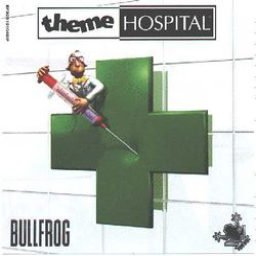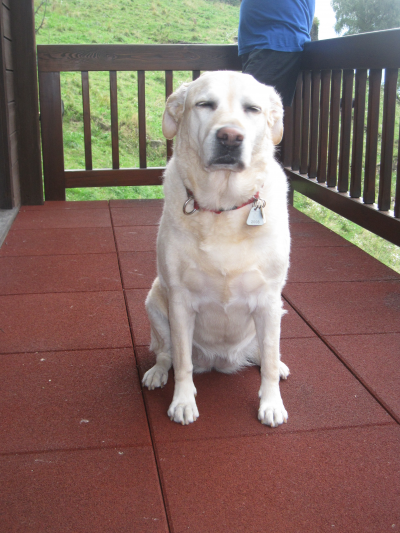Hi Habbit,
I wanted to know why in the Festering-on-the-World world, you close the hospital with fracture clinic and hair restoration?
Wouldn't you finish the level faster by adding X-rays and the Cardiogram?
pardon my English
Hi lepapagameur, that is a good question and I like answering such questions.
The matter is a really complicated optimisation problem. I think adding X-ray in that level would be a good idea, but not mandatory. I don't add Cardiogram since I've concluded that adding it could even be harmful. I could write a full-length article about diagnosis rooms, but I try to explain briefly here. Keep in mind that the theory is specifically for Hard difficulty, and some things are different in easy difficulty - for example, doctors cost less money.
Inter-room variables: Room placement related to other rooms and reception desk Explanation: Why are diagnosis rooms needed? Apart from GP, they really aren't. Patients' route in hospital: -> Reception desk -> GP -> (if needed: additional diagnosis -> GP) -> Cure. Minimising this path maximises hospital efficiency, but that is a separate topic and I don't discuss it further now, except that it was one variable on the planning of Festering-on-the-World.
Intra-room variables: Time taken per visit (with optimal design), money obtained per visit (with default charging), diagnosis points for patient, minimum room size Explanation: Diagnosis rooms have different time taken per patient. This is pretty obvious if one monitors them closely. Different diagnosis rooms cost money, but since you need hospital value anyways, that variable can be ignored. Your hospital fines the patients more for the more expensive diagnosis equipment. This is the reason why I sell General diagnosis room and build Scanner room in its place. GD default charge is 150$; Scanner is 600$. Diagnosis rooms yield diagnosis points. In short, this means that some diagnosis rooms are more effective at producing correct diagnosis than others. When patient visits a diagnosis room their diagnosis points are incremented according to diagnosis room's and doctor's skill points. Some diseases require more diagnosis points than others. Finally, the room size matters for obvious reasons. X-ray takes the most space.
Here are my observations. Time is seconds on normal speed. Points could be found from game files - here I list "medium", "high", "very high" based on my observations. name time money points size GP 5 100 medium 4 GD 12 150 medium 5 X-ray 7 400 high 6 Scanner 15 600 high 5 Ultrascan 9 500 very high 4 Cardio 14 300 medium 4 Blood machine 21 500 high 4 Ward (diag) 38 200 medium 6 Psychiat (diag) 4 400 medium 5
The doctor at GP guides patient to "most suitable" diagnosis rooms, if additional diagnosis is needed. A quick look at the table gives us confidence that the Cardio is a bad deal, and should be avoided. I also don't build Blood machine, since it is not as good as Scanner, Ultrascan. X-ray doesn't give the most money, but it operates very quickly => long queues don't form. However, if the lines don't get too long, having no X-ray could be beneficial. This is really an optimization problem that would need more research.
One interesting strategy that I haven't covered is intentionally having a poor doctor at GP, forcing patients to take additional diagnosis. This surely increases money obtained from diagnosis, but is it worth it, if some proportion of patients' diagnosis fails because of this? This would result in less money from cure - curing the patients gives the most money after all. This strategy needs more research.
Sorry for long post, I tried to keep it brief. I hope this enlightens the reasons behind my choices in the run.
Thank you very much for your response and the time taken for me to respond. I find all this very interesting. I understood that there were differences between the easy, medium and difficult levels. This is why I ask you the question in order to understand your choices in order to see if I can use it for the easy mode which could give me ideas.
I come back to your choice of a good or a bad doctor. Can taking a bad doctor help to pass a level?
I did not pay attention on one point. Is the fact that a patient is diagnosed considered a cured patient?
I ask you this question because I tried to produce the same diagram as you in easy mode and I notice that I have fewer visits and fewer people treated after 15 minutes of play.
No problem, it's a pleasure to help.
The patient is first diagnosed and if the diagnosis is successful it is then cured - if the diagnosis is failed you get a fax to the fax machine that prompts you if you want to send the patient home or to the auto-autopsy. Curing rooms are Pharmacy, Operating theatre, Slack tongue etc. So diagnosed patient is not yet cured.
I'd say Consult doctors are the way to go in general since they are very efficient and give the most diagnosis points to the patient. Having a non-Consult in specifically GP room could be a good idea if you know what you are doing.
I'll give 3 scenarios to illustrate this problem. In all of them a patient arrives to your hospital, "suffering" from Invisibility. I'll describe the patient's route.
Scenario 1: -> Reception desk -> GP with a "good" (Consult) doctor. Doctor diagnoses the patient's condition without additional diagnosis (+100$) -> Patient is sent to Pharmacy and is cured (+2268$) Total: 2368$
Scenario 2: -> Reception desk -> GP with a "bad" (Junior) doctor. Doctor fails the initial diagnosis and sends the patient to additional diagnosis room, let's say Scanner (+100$) -> Scanner (+600$) -> goes back to GP (+100$) -> Diagnosis was correct, patient is sent to Pharmacy and is cured (+2268$). Total: 3068$
Scenario 3: -> Reception desk -> GP with a "bad" (Junior) doctor. Doctor fails the initial diagnosis and sends the patient to additional diagnosis room, let's say Scanner (+100$) -> Scanner (+600$) -> goes back to GP (+100$) -> Diagnosis failed, patient is sent to home or auto-autopsy. Total: 800$
These examples illustrate the risk this strategy would have. You may end up with more money per patient, or significantly less. You would need more GP and additional diagnosis rooms with this strategy as well, since the patients stay longer in the diagnosis part. Notice that when the patient comes to the GP for the second time, it would be better to have a Consult there this time, to have the best probability for a successful diagnosis.
And what comes to my hospitals' layouts, they definitely aren't perfect, there is a lot of room for improvement. Pun not intended.




